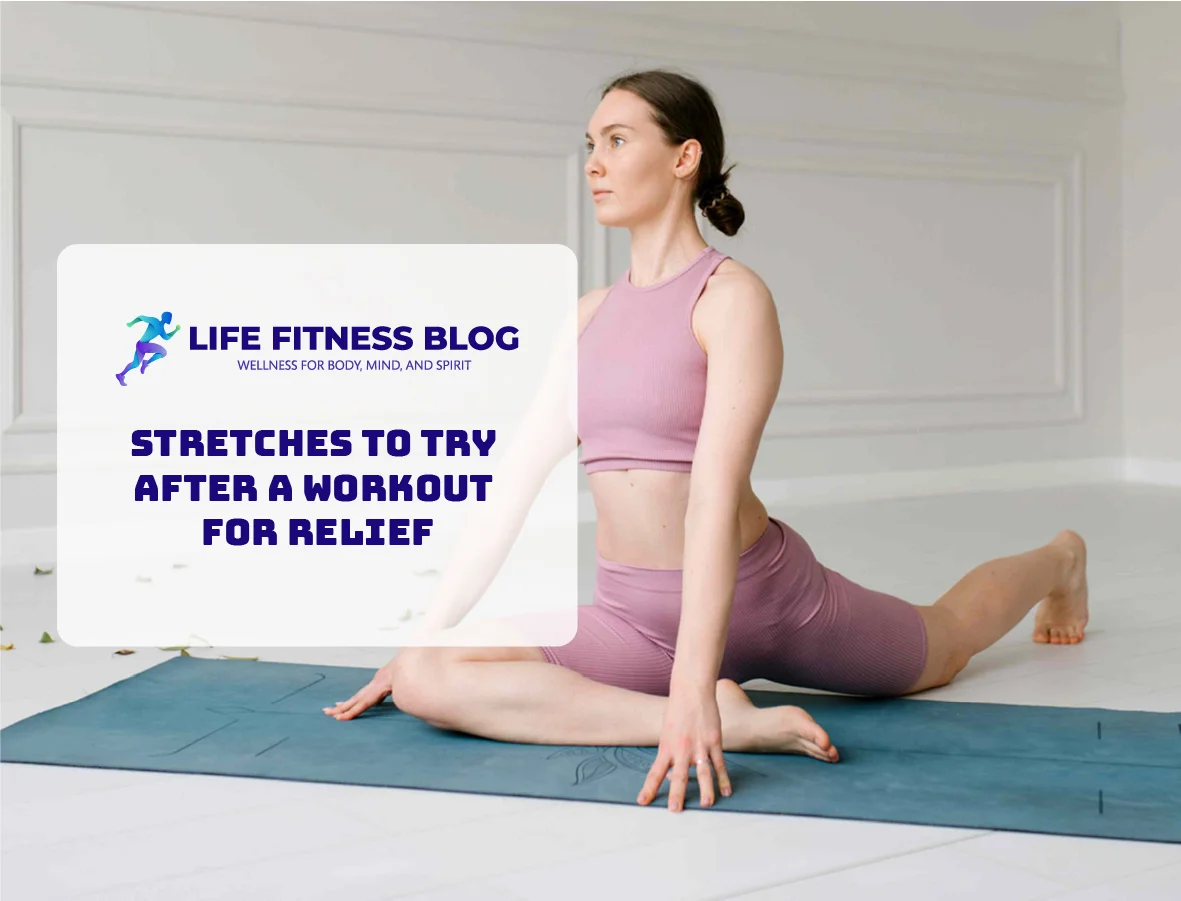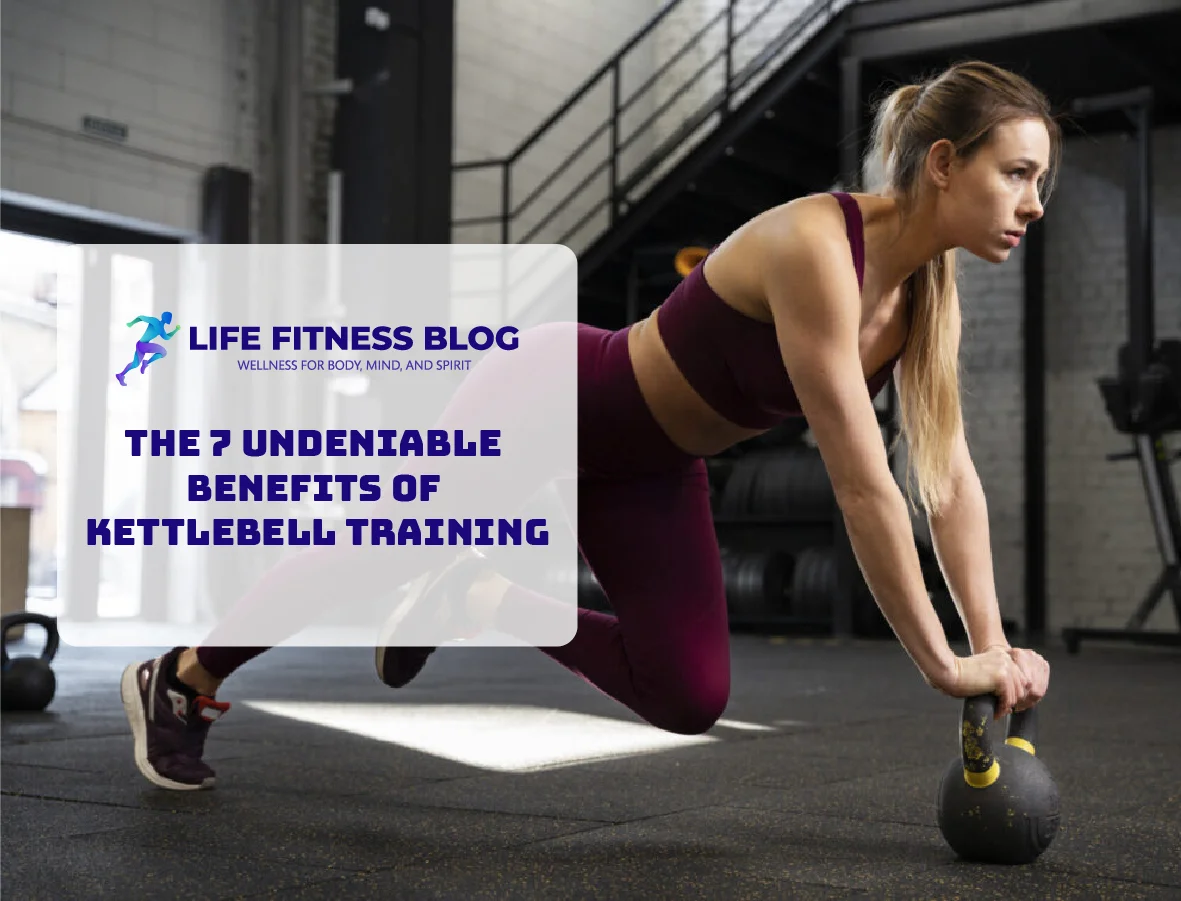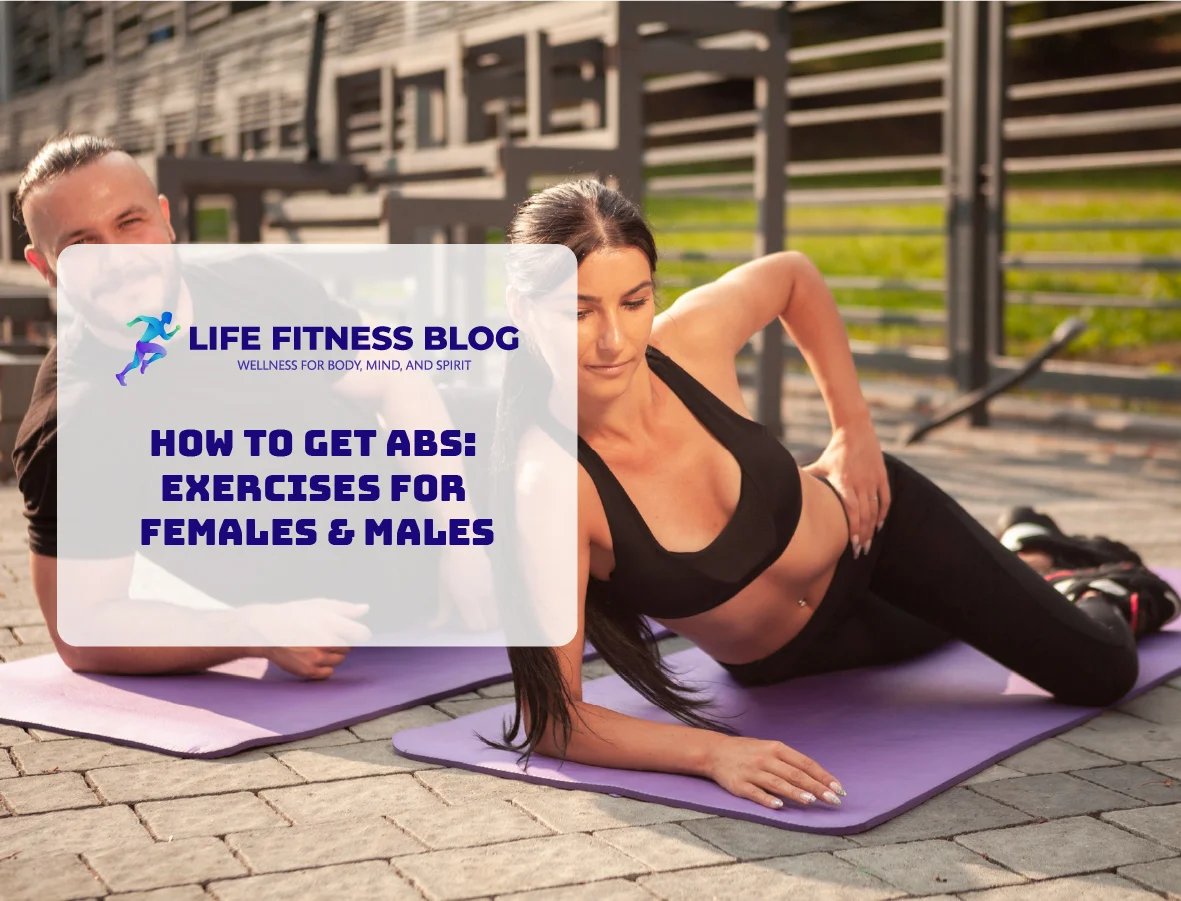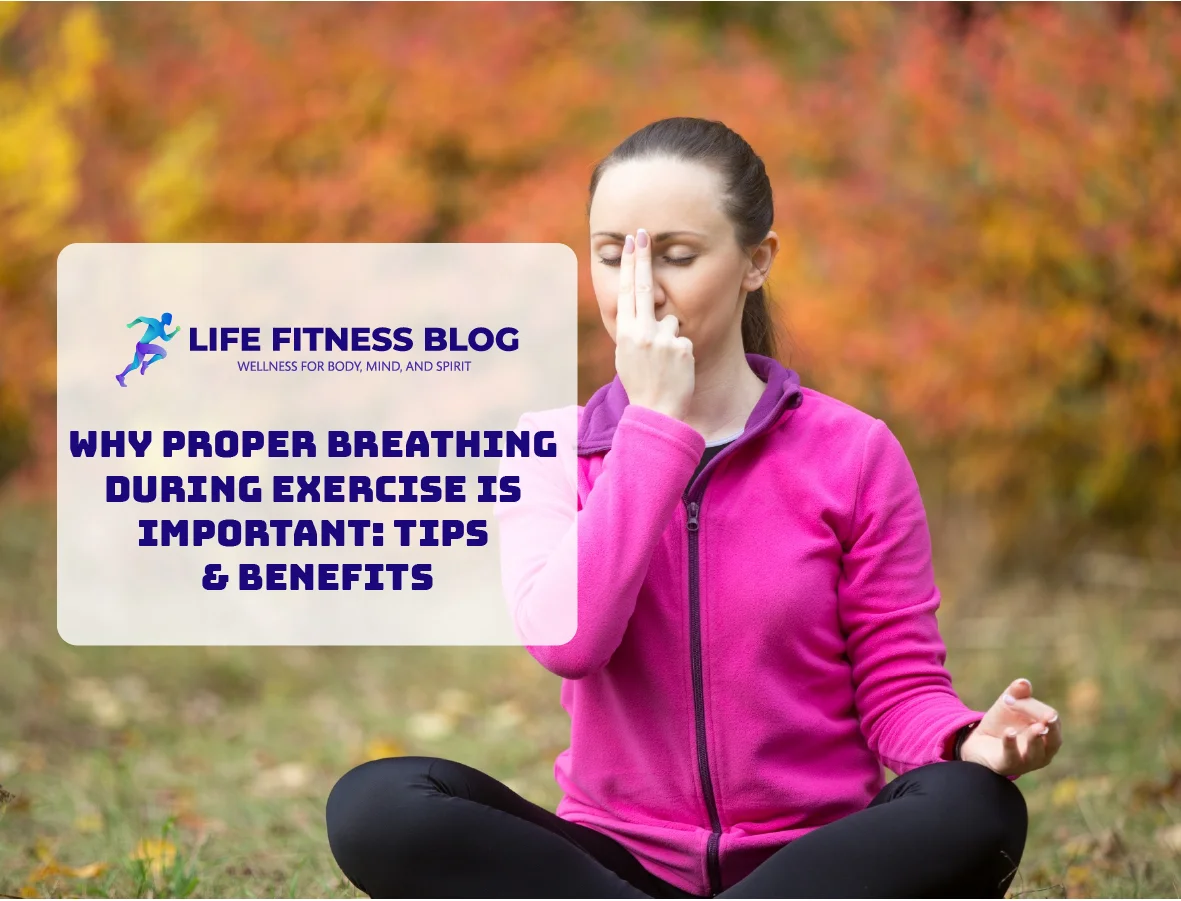After a workout, your body needs time to recover. Post-workout stretching can help with this. It reduces muscle soreness and improves flexibility, making recovery easier.
By adding post-workout stretching to your routine, you can feel better faster. You’ll learn how to make it a daily habit. This will help you live a healthier, more balanced life.
Post-workout stretching is key to reducing muscle tension and improving well-being. As you start stretching after workouts, you’ll notice big benefits. You’ll feel more flexible and less sore, making it easier to get back to your day.
Understanding the Importance of Post-Workout Stretching
After a workout, your body needs time to recover and rebuild. Post-workout stretching is key for muscle recovery and better flexibility exercises. It helps reduce muscle soreness, boosts flexibility, and improves athletic performance.
Timing is crucial for post-workout stretching. Stretch when your muscles are warm, usually within 10-15 minutes after exercising. This aids in muscle recovery and prevents injuries. Spend 10-15 minutes stretching, focusing on big muscle groups like hamstrings, quadriceps, and hip flexors.
Benefits of Post-Workout Stretches
- Improved flexibility and range of motion
- Reduced muscle soreness and inflammation
- Enhanced athletic performance and overall fitness
When to Perform Your Stretches
Stretch within 10-15 minutes after your workout for best muscle recovery and injury prevention. Also, add flexibility exercises like yoga or Pilates to your daily routine. This boosts flexibility and balance.
Duration and Intensity Guidelines
Stretch for 10-15 minutes, focusing on major muscle groups. Begin with gentle stretches and increase intensity as you get more comfortable. Always listen to your body and stop if you feel pain or discomfort.
| Stretching Exercise | Duration | Intensity |
|---|---|---|
| Hamstring Stretch | 15-30 seconds | Gentle to moderate |
| Quadriceps Stretch | 15-30 seconds | Gentle to moderate |
| Hip Flexor Stretch | 15-30 seconds | Gentle to moderate |
What Are Some Stretches That Feel Great After a Workout?
Adding stretching to your workout routine offers great exercise relief. It helps your body recover from exercise. There are many stretches that feel amazing after working out. Try stretching your hamstrings, quadriceps, and hip flexors, as these areas often get tight.
Creating a stretching routine that suits you is key. You might include static stretches, where you hold a stretch, and dynamic stretches, which move your joints. Some favorite stretches are:
- Leg swings: This stretch loosens the hips and legs.
- Arm circles: This stretch improves shoulder and chest flexibility.
- Neck stretches: These help relieve neck tension and improve posture.
Always listen to your body and adjust your stretches as needed. If you’re tired or sore, go for gentle stretches that relax and offer exercise relief. But if you’re full of energy, try more challenging stretches to boost your workout routine.
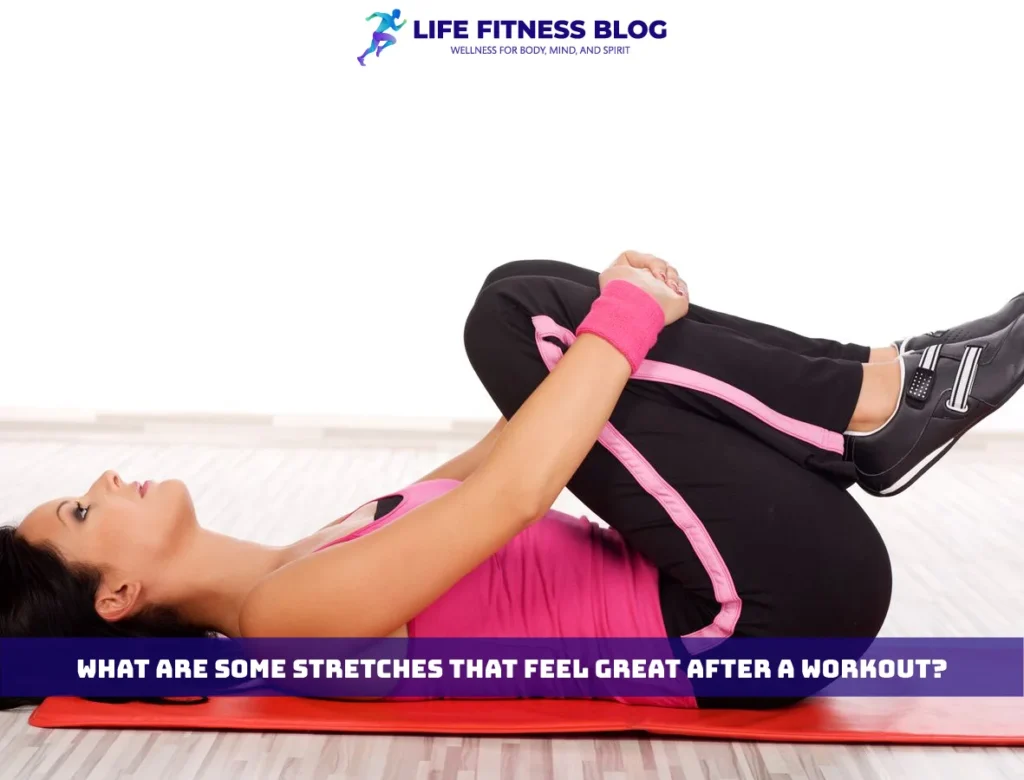
After working out, it’s key to stretch your lower body. This includes your quadriceps, hamstrings, calves, and hip flexors. Stretching these areas helps with muscle recovery and boosts flexibility.
Lower body stretches focus on several key areas. You’ll want to stretch your quadriceps and hamstrings, as well as your calves and ankles. Don’t forget your hip flexors. These stretches help your body recover and get ready for the next workout.
Quadriceps and Hamstring Stretches
Stretching your thighs is crucial for flexibility. To stretch your quadriceps, stand with one hand on a wall and lift one leg back, keeping it straight. For your hamstrings, sit on the floor with your legs straight and lean forward, trying to touch your toes.
Calf and Ankle Mobility Exercises
Improving your lower leg mobility is important. Calf raises and ankle circles are great for this. Stand on a step with your heels hanging off to do calf raises. For ankle circles, sit on the floor and lift one foot, drawing circles with your ankle.
Hip Flexor Stretches
Hip flexor stretches to keep your hips flexible. Start on your hands and knees, then bring one knee forward and place your foot flat. Lean forward to stretch your hip.
| Stretch | Benefits |
|---|---|
| Quadriceps Stretch | Improves flexibility in the front of the thigh |
| Hamstring Stretch | Improves flexibility in the back of the thigh |
| Calf Raise | Improves mobility in the lower leg |
| Hip Flexor Stretch | Improves flexibility in the front of the hip |
Upper Body Stretch Sequences
Adding flexibility exercises to your workout routine is key. Focus on your shoulders, chest, and back. This will boost your flexibility and cut down on muscle soreness.
It’s important to stretch right to avoid injury. Shoulder rolls, chest stretches, and back stretches are great for your upper body.
- Shoulder rolls: These help loosen up your shoulder muscles and improve flexibility.
- Chest stretches: These can be done using a doorframe or by placing your hands on a wall and leaning forward.
- Back stretches: These can be done by placing your hands behind your back and interlocking your fingers, then leaning back.
Adding these stretches to your routine will enhance your range of motion. Hold each stretch for 15-30 seconds and breathe deeply. With regular practice, you’ll see big improvements in your flexibility and health.
| Stretch | Target Area | Benefits |
|---|---|---|
| Shoulder Rolls | Shoulders | Improves flexibility, reduces muscle tension |
| Chest Stretches | Chest | Improves flexibility, reduces muscle soreness |
| Back Stretches | Back | Improves flexibility, reduces muscle tension |
Core and Back Stretching Techniques
When it comes to exercise relief, focusing on your core and back is key. These areas are often overlooked but are vital for flexibility and stability. After a workout, post-workout stretching routines can ease muscle soreness and boost range of motion.
Let’s look at some important stretches for the core and back. These include:
- Spinal twist variations: These stretches enhance torso flexibility and can be adjusted for different fitness levels.
- Lower back release movements: These gentle stretches target the lower back, reducing tension and discomfort.
- Abdominal stretches: These stretches work on the abdominal muscles, enhancing posture and easing muscle soreness.
Incorporating these stretches into your post-workout stretching routine can greatly improve exercise relief and overall health. Always listen to your body and adjust the intensity and duration of your stretches as needed.
Dynamic vs. Static Stretching: Which to Choose Post-Workout
After working out, you can choose between dynamic and static stretching. Each has its own benefits and drawbacks. The best choice for you depends on your needs and goals. For muscle recovery, dynamic stretching is usually better. It boosts blood flow and lessens muscle soreness.
Static stretching is better for flexibility exercises. It allows for deeper stretches and can increase the range of motion. But, it might not be as good for muscle recovery. It can make muscles longer and less responsive. To get the most from your stretching, mix both dynamic and static stretches.
- Start with dynamic stretches to help increase blood flow and reduce muscle soreness
- Follow up with static stretches to help improve flexibility and range of motion
- Listen to your body and adjust your stretching routine accordingly, taking care not to overstretch or cause injury
Mixing dynamic and static stretches in your routine can help with muscle recovery and flexibility exercises. It can lower injury risk and boost performance. Always listen to your body and adjust your routine as needed. Don’t hesitate to try new stretches and find what works best for you.
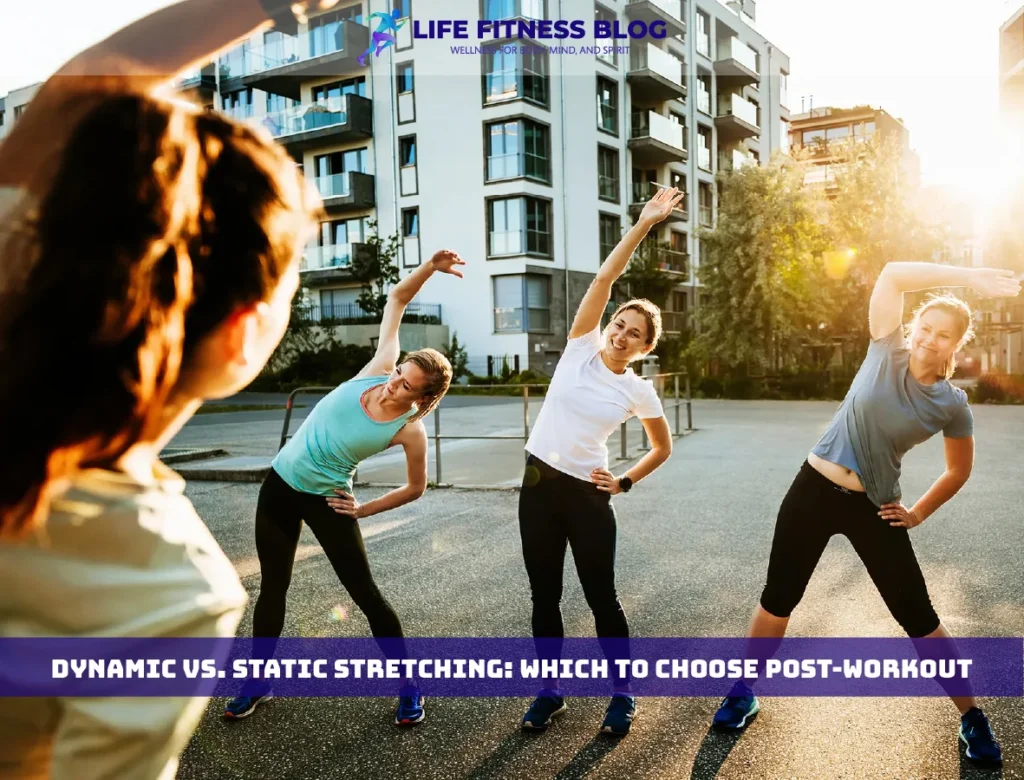
Common Stretching Mistakes to Avoid
When you add stretching to your workout, watch out for common mistakes. These can slow down your progress or even cause injuries. It’s key to use the right form and technique to get the most from your stretches.
Don’t overstretch, as it can do more harm than good. Always listen to your body and adjust your stretches if needed. If you feel pain or discomfort, stop right away and make the stretch easier.
Proper Form and Technique
To get the best from your stretches, focus on the right form and technique. Keep your breathing steady, engage your core, and move slowly and smoothly. This way, you’ll target the right muscles and stretch deeper.
Breathing Patterns During Stretches
Deep, controlled breathing is crucial for stretching. It relaxes your muscles, boosts flexibility, and lowers tension. By using the right breathing in your stretches, you’ll improve your workout and feel more relief.
Knowing these common mistakes and avoiding them will help you create a safe and effective stretching routine. Always focus on proper form and technique. If you’re unsure, ask a qualified fitness professional for help.
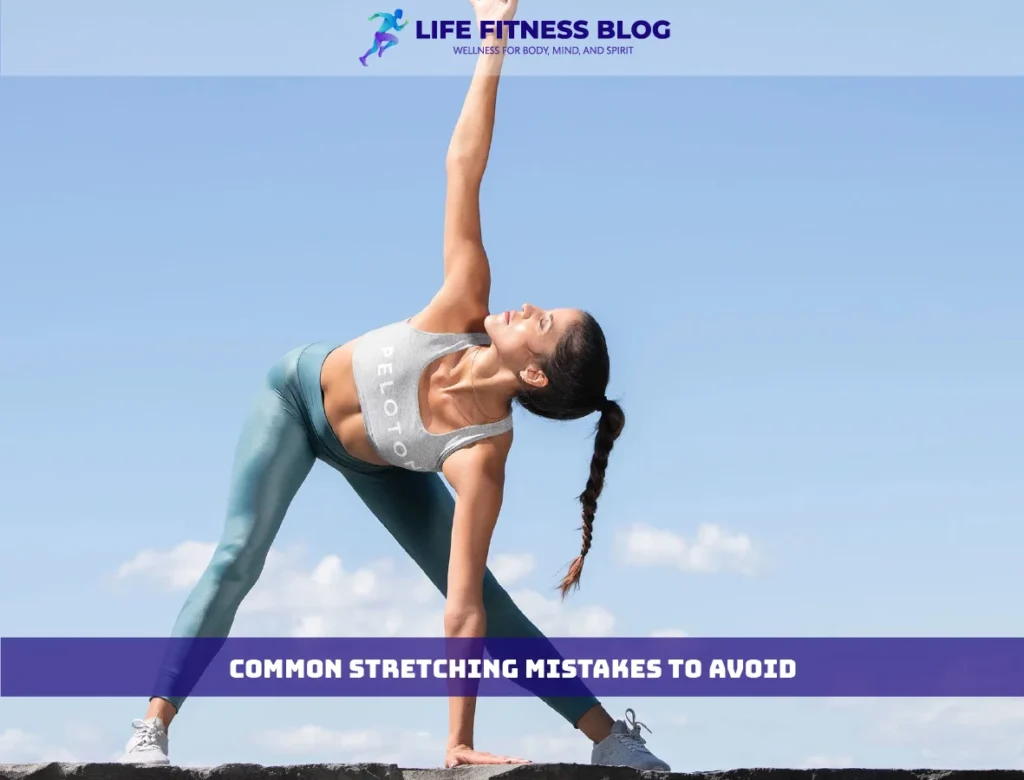
Incorporating Stretching Tools and Equipment
To make your post-workout stretching better, think about using stretching tools and equipment. You can use foam rollers, resistance bands, and stretching mats. These tools help improve your flexibility, reduce muscle soreness, and boost your performance.
When picking the right gear, think about the stretches you want to do and how much support you need. Foam rollers are great for self-myofascial release. Resistance bands help increase flexibility and range of motion. Stretching mats offer a comfy, non-slip surface for stretching.
Using stretching tools and equipment has many benefits. These include:
- Improved flexibility and range of motion
- Reduced muscle soreness and better muscle recovery
- Enhanced performance and lower injury risk
As you add stretching tools and equipment to your routine, remember to focus on proper form and technique. This ensures you get the most out of your stretches and support effective muscle recovery. By combining post-workout stretching with the right equipment, you can elevate your fitness routine and reach your goals.
Conclusion: Making Post-Workout Stretching a Healthy Habit
Incorporating post-workout stretching into your routine is key. It helps with exercise relief, improves flexibility, and boosts athletic performance. By stretching regularly, you’ll feel less muscle soreness, recover faster, and move better.
To make stretching a habit, set aside 5-10 minutes after each workout. Focus on stretching the big muscle groups like your legs, core, and upper body. Always listen to your body and adjust the stretches as needed.
Consistency is crucial for the best results. Make stretching a must-do after every workout. You’ll see better mobility, lower injury risk, and feel more overall well-being. Start this recovery practice and watch how it changes your fitness journey.
Also Read: 5 Easy Ways to Get More Active
FAQs
Why is post-workout stretching important?
Post-workout stretching helps reduce muscle soreness, improves flexibility, and aids in muscle recovery, making it essential for enhancing overall fitness and performance.
When is the best time to stretch after a workout?
The ideal time to stretch is within 10-15 minutes after your workout when your muscles are still warm, as this maximizes recovery and flexibility benefits.
What are some effective lower body stretches?
Key lower body stretches include quadriceps stretches, hamstring stretches, calf raises, and hip flexor stretches, which help improve flexibility and reduce muscle tension.
Should I do dynamic or static stretching after a workout?
Both are beneficial, but dynamic stretching is great for muscle recovery, while static stretching improves flexibility. A combination of both can provide optimal results.
How can I make post-workout stretching a habit?
Set aside 5-10 minutes after each workout to stretch major muscle groups, stay consistent, and listen to your body to gradually build a sustainable stretching routine.

